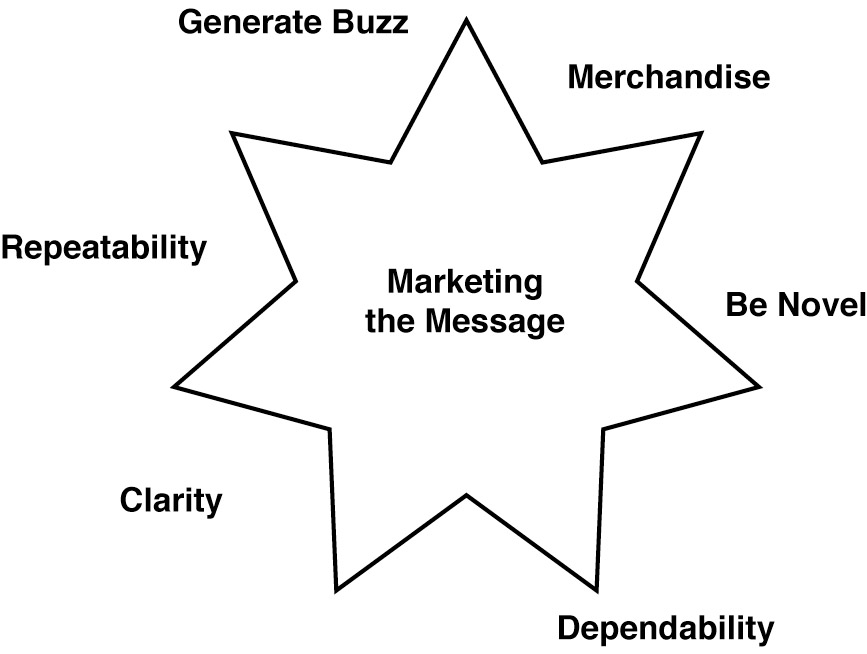Westside Toastmasters is located in Los Angeles and Santa Monica, California - Westside Toastmasters on Meetup
Marketing the Message
Advertisers also know how to make certain that a message resonates. Their job is to create awareness and provide a stimulus for action. Here are some things to consider (see Figure 4-2):
Generate buzz. Get people talking about what you are saying. Take your cue from the Star Wars marketing team; they begin marketing the next sequel along with the current release, often years in advance of its premiere showing. Come opening day, you cannot pick up a newspaper or magazine without reading something about the phenomenon. Much of the promotion is free media. Leaders need to get people talking about their messages, too. Select key influencers the way a marketer might select key media outlets or talk show hosts. Grant them access to what's going on and challenge them to spread the word.
Merchandise the message. Give people something in return. Consider Bill Veeck, the legendary baseball promoter; his promotional concepts sprang from his love of the game as well as his respect for the paying customer.[5] Leaders need to do the same. Logos on hats, slogans on polo shirts, and banners in the hallways will get people exposed to the message. If you use the message as the theme of a sweepstakes and create some genuine excitement, people will get caught up not only in the fun, but in the meaning of the message.
Be novel. Look for ways to make the message new and different. Advertisers do this by being creative. The U.S. Army introduced a high-end action adventure PC-based game entitled Action Army with two aims in mind: one, to attract potential recruits and get them to consider enlisting, and two, to demonstrate new forms of military tactics. Not only is this approach creative, it enables participants to experience the Army for themselves.
Dependability. Be seen as a relentless communicator. Get people used to seeing you articulate the message over and over again. Budweiser sponsors major sports because this gives it the optimum opportunity to reach its core market. Leaders must also find multiple ways to disseminate their messages—email, web site, video, telephone, and, yes, in person. When you become dependable, people will look to you for information as well as for inspiration.
Clarity. Keep the message consistent with the culture of the organization. Volunteer-based organizations such as the Girl Scouts, the Salvation Army, and the U.S. Marine Corps excel at making their messages simple, direct, and in keeping with their cultural values. When you see an ad for one of these organizations, you know what the organization stands for; there is no ambiguity about its purpose or intention.
Repeatability. It is overly optimistic (and maybe a little presumptuous) to think that people will remember a message the first time they hear it. Maybe the listener didn't hear it the first time, or perhaps it was not relevant to her or him the first time she or he heard it. It is the leader's responsibility to repeat the same message in different locations. The more times an audience sees and hears a message, the greater the chance that they will remember it. Think of advertising for your friendly local auto dealer. You see new ads for the business on television, over the airwaves, in the newspaper, and on billboards. Pretty soon you get the point of who the dealer is and what he sells. Leaders, too, need to be seen and heard frequently.
[5]Pat Williams with Michael Weinreb, Marketing Your Dreams: Business and Life Lessons from Bill Veeck, Baseball's Marketing Genius, pp. 195-197.




